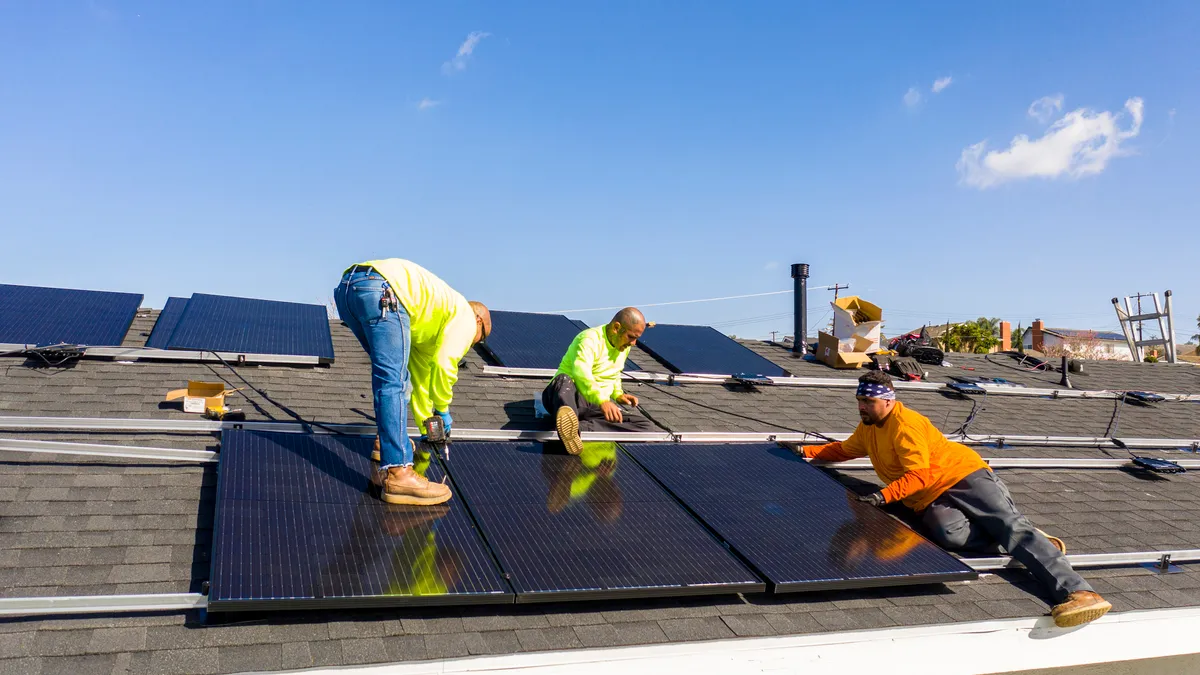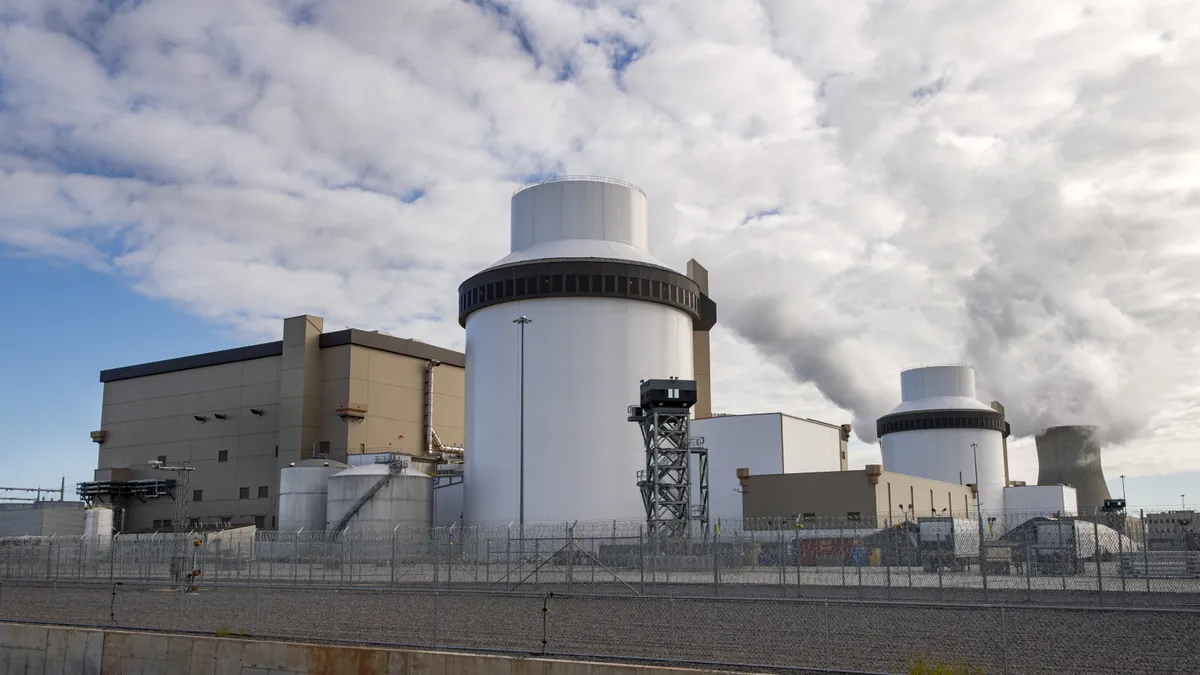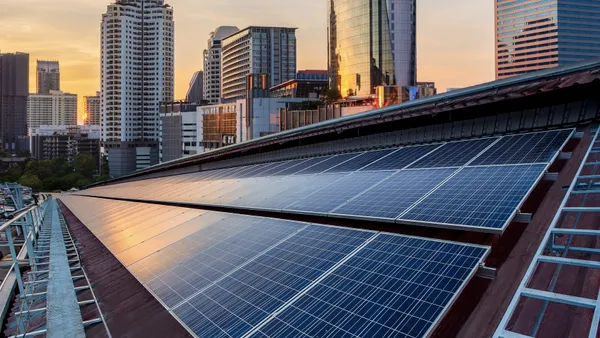Dive Brief:
- Haven Energy is offering a “first of its kind” program to bring solar and battery storage systems to low- and moderate-income California utility customers at no cost to them, the company said Monday.
- The initiative, which sees Haven owning and operating the systems, is made possible by the state’s $280 million Self-Generation Incentive Program’s Residential Solar & Storage Equity framework, SGIP RSSE, Haven said.
- Haven is also partnering with The Energy Coalition, a Los Angeles nonprofit group, to install home battery systems for low- and moderate-income customers in Southern California through the Bassett Avocado Heights Advanced Energy Community program, it said.
Dive Insight:
As the Trump administration targets utility-scale clean energy development, experts say smaller-scale distributed energy resources could pick up some of the slack.
In a January update to its Pathways to Commercial Liftoff: Virtual Power Plants report, the U.S. Department of Energy said the country’s current VPP capacity of approximately 30 GW could scale to at least 80 GW by 2030 following a concerted effort by utilities, grid operators, resource aggregators and other stakeholders to encourage broader DER adoption, simplify program design and enrollment, and integrate VPPs into utility planning and wholesale markets.
The announcements this week show Haven is doing its part to support the first two goals while delivering more capacity into a California wholesale market that offers multiple forms of support for DERs and VPPs.
With the SGIP RSSE framework capable of supporting solar and storage installations for an estimated 8,000 to 10,000 qualifying California households, Haven anticipates deploying 10 MW of distributed capacity in what would become one of the state’s largest VPPs, the company said. Haven automatically enrolls its customers in an eligible demand response program for 10 years, it said.
Haven has already installed more than 1,000 batteries under the SGIP RSSE framework, Haven co-founder and CEO Vinnie Campo said in an interview.
Haven typically sizes its solar and storage systems to meet at least 100% of its customers’ electricity usage to fully offset their expected generation charges, Campo said. Net of fixed charges, customers generally see an 80% to 90% reduction in their monthly electric bills, he said.
That promises significant relief for low- and moderate-income customers in a state where the average residential retail price of electricity exceeds 30 cents/kWh, behind only Hawaii and Rhode Island. Whereas solar-and-storage deployment models generally require customers to carry a long-term lease or pay for systems upfront and then wait for reimbursement from programs like SGIP, Haven further reduces barriers for lower-income customers by offering its systems at no out-of-pocket cost.
As the owner of the systems it deploys, Haven is eligible for federal tax credits on them and “we keep an eye on what happens [on energy policy] at the federal level,” Campo said. But Haven sees growing utility support for DERs and VPPs along with California’s strong incentives for battery deployments, particularly for income-qualified customers, as tailwinds for its business there, he added.
“The trend we’re seeing now is that utilities want to deploy a lot of these,” he said.
Haven markets directly to eligible customers across California — with a focus on the southern part of the state — while also engaging energy justice organizations with connections to underserved communities, Campo said. Haven’s partnership with TEC, which is helping its clients electrify their entire homes, focuses on a state-defined disadvantaged area of Los Angeles near a major freeway, he said.
Haven also serves as the first VPP partner for the Clean Power Alliance, a community choice aggregator in the Los Angeles area, Campo said.
Haven works exclusively in California today, but the company sees significant need for distributed battery deployments in other regions where utilities incentivize them, including New England. The issue is that most utilities’ procedures resemble those used for larger generators, which many residential customers find impractical, Campo said.
“They get the intention right … [but] virtually no one uses these programs because they’re very complex, it’s a lot of paperwork, and [customers] only get compensated after the installation,” Campo said. “We can be the bridge between the homeowner and utility.”













